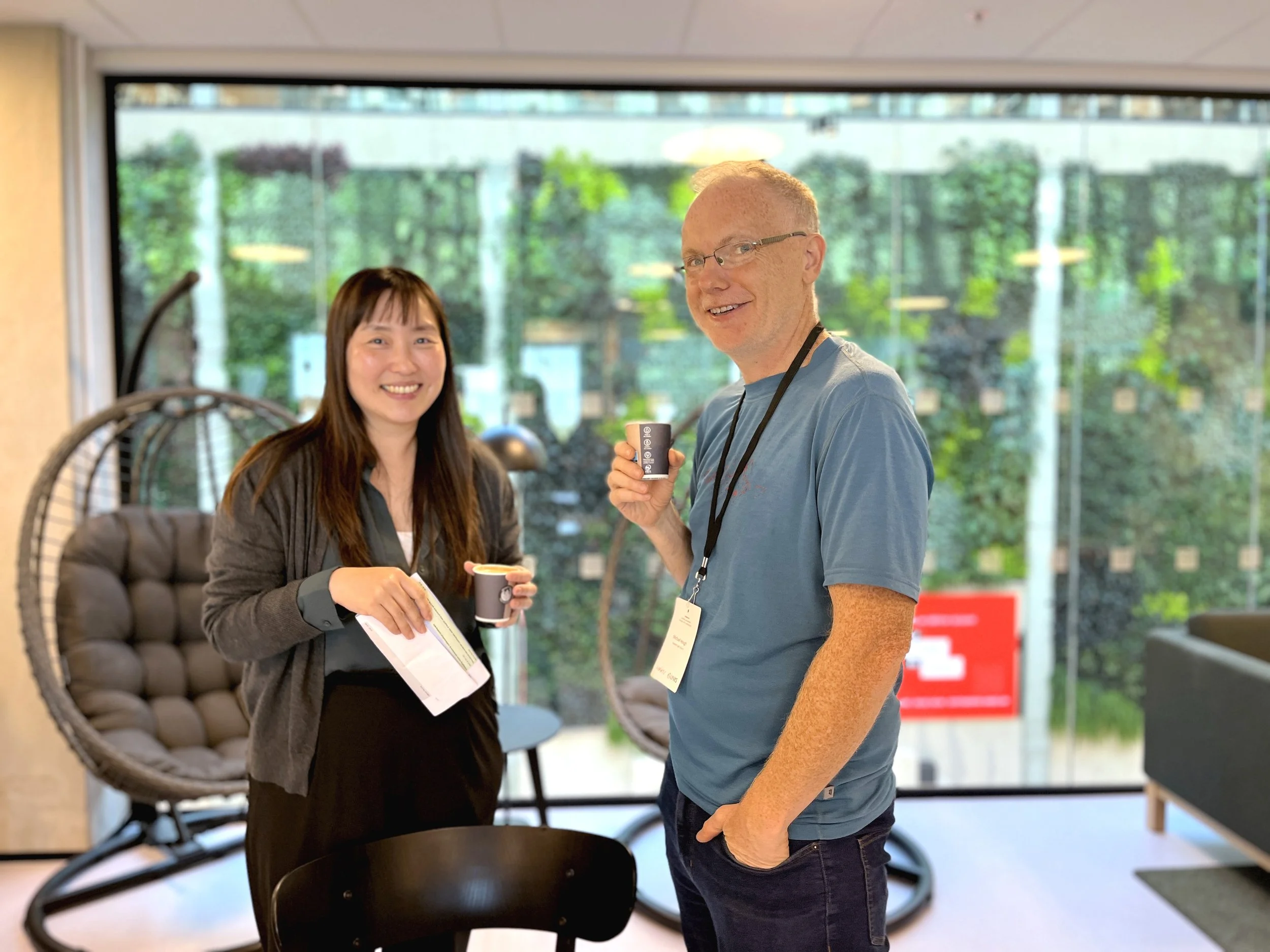Workshop on time-resolved methods with MAX IV bridged gaps between instrumentation experts and life scientists
Hanna Kwon is speaking to Michael Hough, honorary professor in life sciences at The University of Essex.
Time-resolved X-ray-based techniques can yield knowledge on how molecular or chemical processes change over time, enabling researchers to observe molecular interactions, protein folding and chemical reactions. By studying these processes at different time points, one can learn about the dynamics, flexibility and mechanisms of these processes. In September, the LINXS theme Chemistry of Life and MAX IV organised a workshop on what time-resolved techniques are available at MAX IV.
The event focused specifically on time-resolved techniques suitable for investigating the dynamics of length scales and timescales in biomolecules, using for example X-ray spectroscopy, scattering, serial crystallography, and combined methods.
Hanna Kwon, researcher in structural biology at the University of Leicester, and member of the Chemistry of Life Theme reflects:
– Time-resolved methods are inherently interdisciplinary, and events like this help bridge the gap between instrumentation experts and life scientists who want to apply these techniques to challenging biological systems.
She highlights that the workshop was very well aligned with the overall goals of the Chemistry of Life Theme, which aims to take a comprehensive understanding of biology, by drilling down to the minutiae of molecular interactions. To achieve these goals, it is necessary to employ methods that work on different time scales (femtosecond to second) and length scales (Ångström to micrometre), for example time-resolved techniques.
– Time-resolved techqniues afford the ability to directly capture and correlate structural and electronic changes in biomolecules. This is incredibly powerful, and it aligns perfectly with our theme’s focus on understanding dynamic molecular processes that underpin life and health, says Hanna Kwon.
She found the mix of practical information on how to perform time-resolved experiements, including sample preparation and delivery, reaction triggering methods, and large data analysis and interpretation, and scientific applications especially useful for her own work. Currently, her group focuses on combining time-resolved X-ray spectroscopy and crystallography to probe oxygen activation mechanisms in heme enzymes, with the aim of capturing key intermediates in catalysis.
– It was a well-balanced and stimulating event that brought together researchers at different stages of applying time-resolved methods. The combination of technical updates and scientific case studies made it particularly valuable.
She can see great potential for further collaboration between the Chemistry of Life Theme and MAX IV, particularly in training, data analysis pipelines for time-resolved experiments, and coordinated beamtime access to support cross-facility projects.
– Advancing sample delivery methods and synchronising multimodal measurements (e.g. spectroscopy and diffraction) will be further key to unlocking new biological questions. says Hanna Kwon.
Participants discussing in the LINXS lounge during the workshop on time-resolved methods in September.


